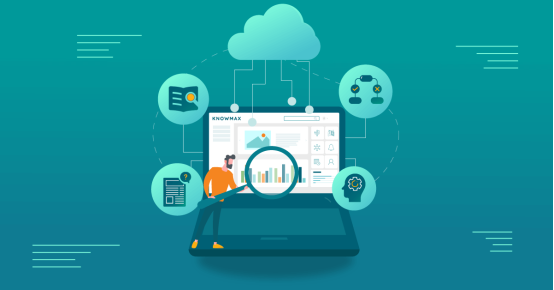Knowledge Base Software in 2025: Tools Redefining Business Productivity
Knowledge base software enables organizations to consolidate knowledge, enhance customer support, and streamline internal processes. In 2025, these platforms have become even more powerful, improving collaboration, lowering operational costs, and giving employees and customers easier access to information that drives efficiency and performance.
Knowledge base software enables organizations to consolidate knowledge, enhance customer support, and streamline internal processes. In 2025, these platforms have become even more powerful, improving collaboration, lowering operational costs, and giving employees and customers easier access to information that drives efficiency and performance.

What Is Knowledge Base Software and Why It Matters
Knowledge base software is a digital solution that helps businesses capture, organize, and share information in a structured format. It functions as a central hub containing tutorials, FAQs, manuals, and articles accessible to employees, customers, or both. For companies, the technology is vital in reducing repetitive tasks—rather than answering identical questions repeatedly, staff can direct users to searchable resources. For customers, a well-maintained knowledge base provides convenient self-service, cutting wait times and boosting satisfaction. By 2025, these platforms have advanced significantly, incorporating artificial intelligence that recommends articles, interprets user intent, and adapts content delivery based on interaction history. Integration with CRM and ticketing tools ensures seamless data flow between teams. As businesses expand, the demand for accurate, consistent information increases, making knowledge bases critical for scaling without sacrificing service quality.
Core Features of Today’s Knowledge Base Platforms
Modern knowledge base tools extend well beyond document storage. Advanced search powered by natural language processing allows users to phrase questions conversationally and still receive accurate results. Design flexibility lets organizations customize their knowledge bases to align with branding. Built-in analytics monitor popular articles, resolution rates, and content gaps, providing insights for continuous improvement. Collaboration tools are also key—employees can co-edit, comment, and propose updates in real time. Broad integration capabilities connect knowledge bases with chatbots, email systems, and mobile platforms, ensuring accessibility across channels. Security is prioritized with role-based permissions, guaranteeing that sensitive materials remain protected. Collectively, these features turn the knowledge base into an interactive resource that supports both staff and customers in dynamic ways.
Advantages and Challenges of Using Knowledge Base Software
The advantages of knowledge base systems are substantial, though adoption comes with challenges. On the positive side, businesses save money by reducing the workload of support teams handling repetitive questions. Employees work more efficiently, spending less time searching for answers and more time on strategic responsibilities. Customers enjoy faster problem-solving, strengthening loyalty and satisfaction. However, challenges exist. Building and maintaining a comprehensive knowledge base demands time, accurate content, and frequent updates. Without clear oversight, information can become outdated or disorganized, reducing usefulness. Another obstacle is cultural—organizations may struggle to motivate employees to contribute knowledge consistently. Overcoming these barriers requires strong leadership, defined processes, and ongoing review cycles. When managed effectively, the long-term benefits far outweigh the difficulties, turning knowledge base software into a vital growth enabler.
Future Directions for Knowledge Base Software in 2025 and Beyond
Looking forward, knowledge base platforms will play an increasingly central role in digital transformation. AI and machine learning will refine personalization, offering context-aware answers tailored to each user. Predictive functions will anticipate needs before they arise, guiding users proactively. Voice technology will expand, enabling users to interact with knowledge bases through natural speech. With remote and hybrid work firmly established, cloud-based solutions will dominate, ensuring real-time access across locations and devices. Security and compliance will also grow in importance, with more robust safeguards protecting sensitive data. Gamification may be introduced to encourage employee participation, creating incentives to keep content accurate and up to date. Over time, knowledge bases will evolve from static reference points into adaptive ecosystems that develop alongside business needs. Companies that invest in advanced tools today will be better equipped to scale and innovate in tomorrow’s digital marketplace. As customer expectations rise, omnichannel consistency will become essential, ensuring that whether through voice, chat, or web, users receive accurate and uniform information. Looking even further, integration with augmented reality and virtual reality could introduce immersive training, troubleshooting, and product demonstrations, expanding the scope of knowledge sharing. These trends underscore that knowledge base software has become more than a support mechanism—it is now a strategic driver of innovation and growth.

